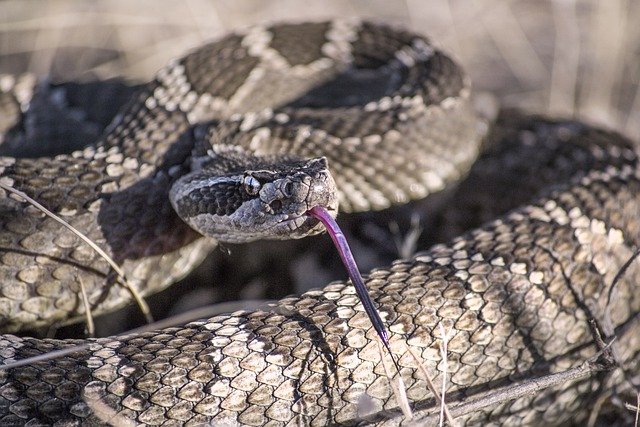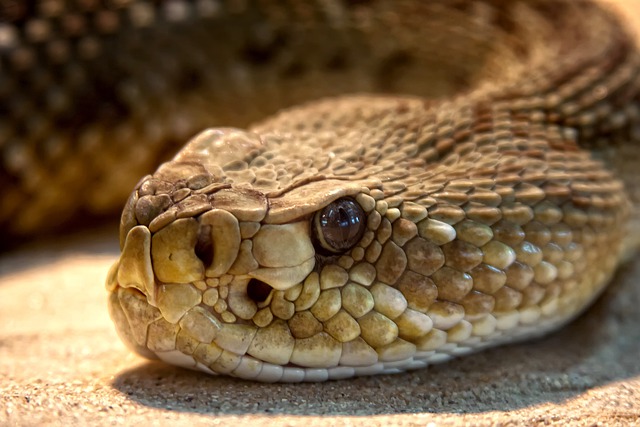To start with, what to do if bitten by a rattlesnake while hiking?
Initially, you need to understand how to identify a snake bite. Knowing whether the injury was actually caused by a snake bite is crucial. If you were present when it happened, you can proceed to the next step with confidence. If you weren’t present when someone was bitten, look for evidence of the two-fang bite mark. Additionally, the bite area may swell and hurt moderately to severely.
Along with twitching skin, you should also keep an eye out for skin discoloration, which indicates the presence of venom. The victim may also experience other symptoms such as abnormal mental state, sweating, nausea, vomiting, dizziness, and slurred speech. If the warning signs and symptoms are present, you should continue if the bite was indeed caused by a snake.
For more information, keep reading.
Table of Contents
What To Do If Bitten By A Rattlesnake While Hiking?
- Severe or even life-threatening symptoms may appear minutes after the bite, or they may start to appear a few hours later in other cases. As a result, you should seek immediate medical attention.
Rattlesnake bites can cause severe pain and swelling where they were bitten, excessive bleeding, nausea, swelling in the mouth and throat that makes breathing difficult, lightheadedness, drooling, and in rare instances, even collapse and shock. - Applying ice, using a tourniquet or a constricting band, attempting to suck out the venom, and using any tool to cut or slice the bite site are all prohibited.
Amputation may result from constricted blood vessels close to a rattlesnake bite. Remove wristwatches, finger rings, and any other constricting objects, then wash the wound with soap and water. - Until you can be taken to a medical facility, maintain your composure, try to avoid exertion, and keep the affected extremity below the level of your heart.
Despite the low likelihood of being bitten by a rattlesnake. But by taking a few precautions outside, people can lessen their risk of getting bitten and experiencing uncomfortable or even life-threatening symptoms.
What Not To Do?
Never attempt to cup the wound open. If possible, avoid sucking the venom out. You have to be aware that if any tissues inside your mouth are cut or otherwise damaged by the venom, you could be in serious danger.
Another major error is using any kind of ointment. Giving the patient any alcohol is the same as not giving it to them. To clean the wound, just use water and soap.

Medical Management
In addition to the likelihood that the snake is not a poisonous variety, it is common for venom to not actually be transmitted in a bite. The need for hospital management would still exist even if the snake were not poisonous because the wound would still need to be attended to and tetanus shots (depending on how long ago you received the shots) would still need to be given. The fact that a snake bite can cause tetanus shocks many people.
If the snake’s poisonousness has been established and the venom has been administered, antivenom is necessary. But it’s important to keep in mind that not all hospitals might have easy access to antivenom. Therefore, being knowledgeable about first aid can really save the victim, especially if it’s necessary to buy time between the time of the bite and when the victim gets to the hospital. See more about What Is Scramble In Hiking?
Top Tips To Prevent Rattlesnake Bites
Naturally, avoiding a snake bite is preferable to dealing with one. To lessen your risk of getting bitten by a snake while trail running, try these tips:
• Wherever you’re running, be aware that there may be snakes.
• Watch where you put your feet and take extra care around rocky, sunny, leafy, and log-crossed areas. Because there are more rocks and cracks and fewer people to scare the snakes away when you stray from the trail, your chances increase. When moving quickly through weeds and tall grass, be careful.
• Not over a rock or a log, but on it. This will enable you to quickly identify any snakes that might be hiding beneath it.
• You might be sitting on a snake if you take a seat on a rock or tree stump.
• The majority of snake bites occur when people attempt to chase snakes off of trails.
• On trails, either leave your headphones at home or take at least one earbud out.
• Snakes prefer to be near water, especially if it’s in a dry environment. Be extra cautious if you’re close to a spring or river.
• Snakes like to emerge during warm weather to sun themselves on rocky outcrops or trails because they have cold blood. The edge of a sunny area is where they prefer to be. Your chances of encountering someone rise if you come across a sunny area.
• In the US, the day is when venomous snakes typically rest. In the early mornings and late evenings, when they may be more active, there is a greater chance of encountering one.
• The number of sightings increases in the spring after snakes have shared a hibernation period. When they retreat to a hiding place in the fall to spend the chilly winter, they are more active, increasing the likelihood of running into a snake. Between April and October, the majority of snake bites happen.
• Invest in a 2-way satellite communicator, like the Garmin inReach. This makes it possible for you to connect to a Search and Rescue Monitoring Center around the clock and stay in touch from anywhere in the world, including from far-off trails without cell phone service.
The End
What should I do to avoid and treat a snake bite? is a question that hikers and climbers frequently ask. The majority of hikers are actually ill-prepared for snake bites. Hikers rarely encounter snakes up close and personal in most cases. Contrary to popular belief, snakes can be both aggressive and defensive when their territory is threatened. It is a common misconception that snakes are more afraid of humans than of other animals. Recently, we had the opportunity to take a once-in-a-lifetime rafting trip through the Grand Canyon, and let me tell you, I was constantly on the lookout for snakes.
Knowing what to do right away is crucial if there is a bite as a result of this interaction. Alternatively, the venom of a number of common American snakes (like rattlesnakes, cottonmouths, and copperheads) can result in serious injury, limb loss, or even death.
I’d like to thank you for reading.


